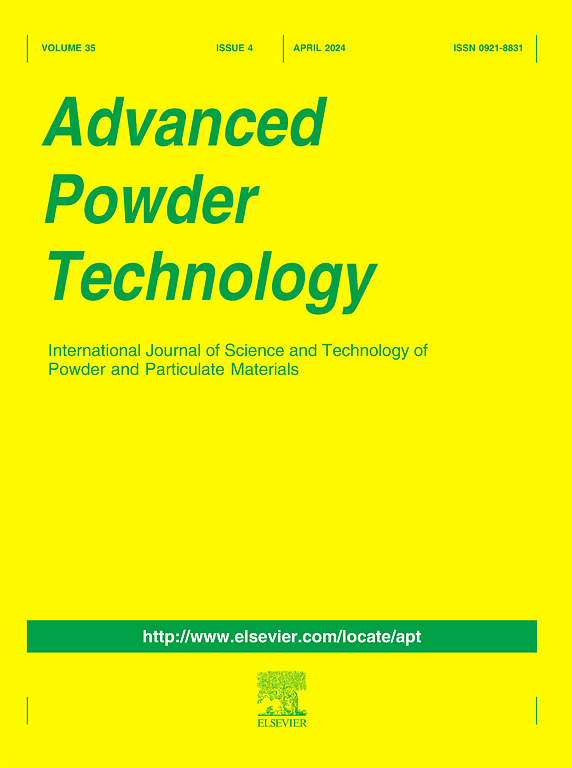低导热高岭土增强纤维素海绵的常压干燥制备
IF 4.2
2区 工程技术
Q2 ENGINEERING, CHEMICAL
引用次数: 0
摘要
纤维素海绵具有密度小、孔隙率高、导热系数低等特点,在保温、吸附、催化等领域得到了广泛的应用。但其制备工艺复杂,力学性能差。为此,以甘蔗渣和矿物为主要原料,研究了常压干燥制备矿物增强纤维素海绵的工艺。由于纤维素、矿物、戊二醛和壳聚糖之间的交联反应,形成了更稳定的三维网络结构,提高了海绵的力学性能。高岭土增强纤维素海绵的体积密度为70.10 mg/cm3,孔隙率为99.20%,50%应变时抗压强度为231.20 kPa,导热系数为43.50 mW/(m·K)。目前采用常压干燥法制备的纤维素海绵具有操作简单、成本低、导热系数低、机械强度可接受等优点,有潜力作为建筑保温材料。本文章由计算机程序翻译,如有差异,请以英文原文为准。

Ambient pressure drying preparation of kaolin-reinforced cellulose sponges with low thermal conductivity
Cellulose sponges are widely used in the fields of thermal insulation, adsorption and catalysis owing to their low density, high porosity and low thermal conductivity. However, they suffer from complex preparation process and poor mechanical property. In response to this, an ambient pressure drying route was investigated to prepare the mineral-reinforced cellulose sponges using bagasse and minerals as main raw materials. Thanks to the cross-linking reactions among cellulose, mineral, glutaraldehyde and chitosan, a more stable three-dimensional network structure was formed, enhancing the mechanical property of sponge. The kaolin-reinforced cellulose sponges exhibited a bulk density of 70.10 mg/cm3, a porosity of 99.20 %, a compressive strength of 231.20 kPa at 50 % strain, and a thermal conductivity of 43.50 mW/(m·K). The present cellulose sponge prepared by ambient pressure drying, with its easy operation and low cost, low thermal conductivity and acceptable mechanical strength, can be potentially be used as thermal insulation materials in buildings.
求助全文
通过发布文献求助,成功后即可免费获取论文全文。
去求助
来源期刊

Advanced Powder Technology
工程技术-工程:化工
CiteScore
9.50
自引率
7.70%
发文量
424
审稿时长
55 days
期刊介绍:
The aim of Advanced Powder Technology is to meet the demand for an international journal that integrates all aspects of science and technology research on powder and particulate materials. The journal fulfills this purpose by publishing original research papers, rapid communications, reviews, and translated articles by prominent researchers worldwide.
The editorial work of Advanced Powder Technology, which was founded as the International Journal of the Society of Powder Technology, Japan, is now shared by distinguished board members, who operate in a unique framework designed to respond to the increasing global demand for articles on not only powder and particles, but also on various materials produced from them.
Advanced Powder Technology covers various areas, but a discussion of powder and particles is required in articles. Topics include: Production of powder and particulate materials in gases and liquids(nanoparticles, fine ceramics, pharmaceuticals, novel functional materials, etc.); Aerosol and colloidal processing; Powder and particle characterization; Dynamics and phenomena; Calculation and simulation (CFD, DEM, Monte Carlo method, population balance, etc.); Measurement and control of powder processes; Particle modification; Comminution; Powder handling and operations (storage, transport, granulation, separation, fluidization, etc.)
 求助内容:
求助内容: 应助结果提醒方式:
应助结果提醒方式:


